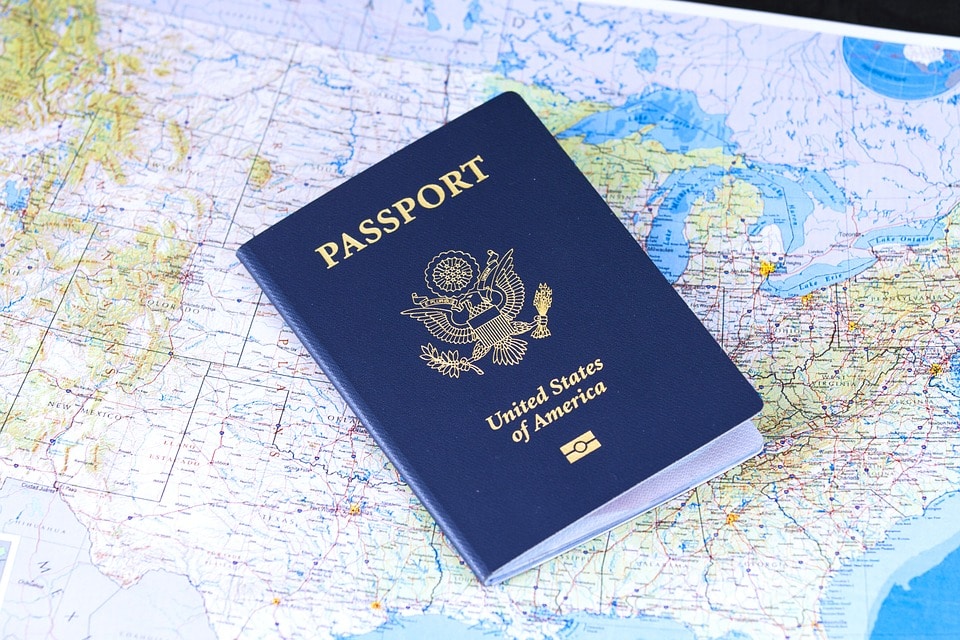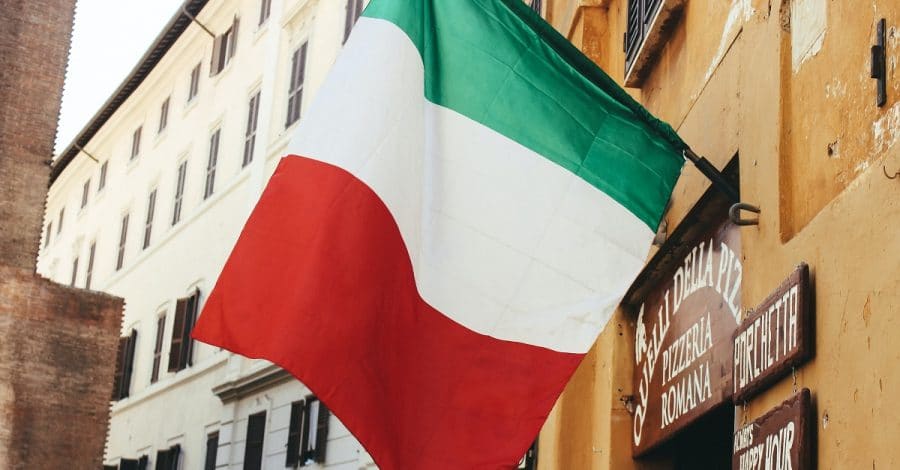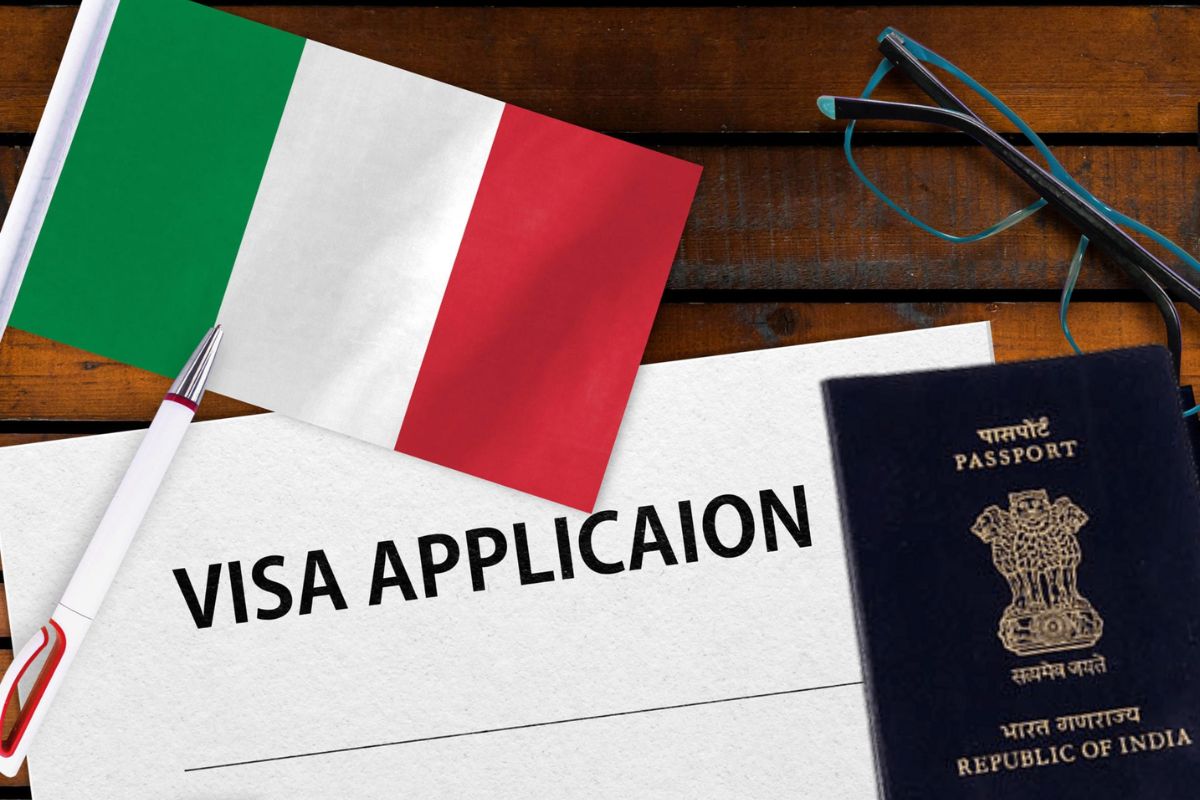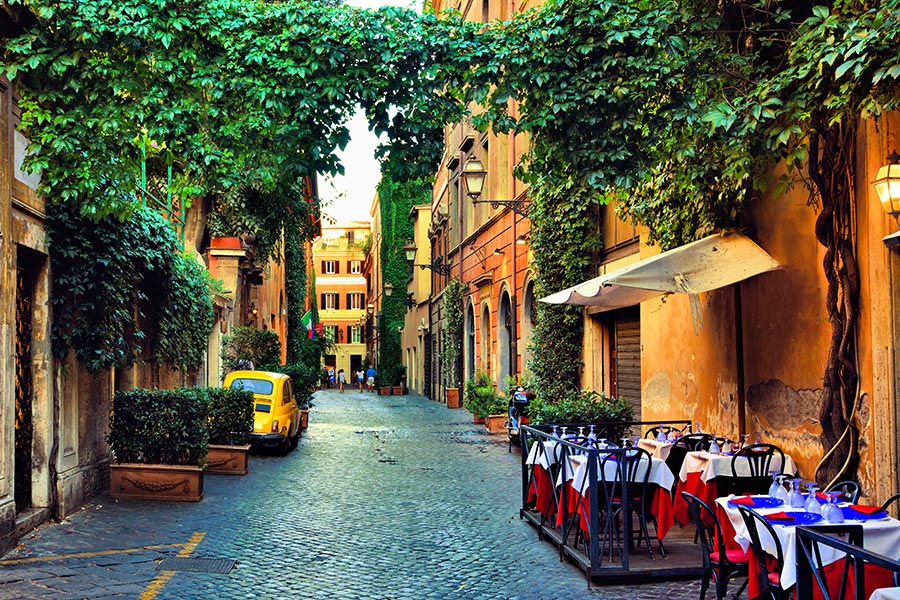Italy is constantly near the top of the list of favorite destinations for American travelers. It has history, landscapes, and the best food!
Whether you’re planning a short vacation, a semester abroad, or even if you’re considering working there long-term or retiring in Italy, it pays to have some knowledge of the country’s visa requirements.
This guide is designed to help Americans understand the visa rules, how visas work, and provide current tips to help them get into the country with ease.
So whether you’re planning just a weekend or a whole new life in Italy, here’s what you need to know in advance.

Do US Citizens Need A Visa to Italy
Whether or not a U.S. citizen requires a visa for a visit to Italy depends mostly on the duration of your visit and the purpose of your visit.
You don’t normally need a visa to visit Italy (and the Schengen Area) for short periods of up to 90 days within a 180‑day period as a U.S. citizen.
If you plan to stay more than 90 days, or will be visiting Italy for reasons other than tourism or business — such as to study, work, join family, or live in the country — you are required to get a visa before your visit.
U.S. citizens will need to obtain an ETIAS authorization before entering Italy starting in late 2026.
If Staying in Italy for Up to 90 Days
U.S. citizens may enter Italy and the Schengen Area for up to 90 days every 180 days for tourism, business, visiting family and friends, attending cultural and sports events, short-term study, receiving medical treatment, or transit.
These activities may not involve paid work or a residence and travelers must exit the Schengen Area before 90 days.
General Conditions for Visa-Free Entry
To visit Italy without a visa, American travelers need to:
Have a valid US passport that is valid for at least three months beyond the intended date of departure from the Schengen Area (six months is recommended).
Not have already stayed past the 90/180-day limit of the Schengen Area.
There must not be an alert for the visa holder in the Schengen Information System (SIS).
Show border authorities what the plans are and how long they are staying.
Required Documents
Although a visa is not necessary, you may need to show the following items on arrival:
Proof of accommodation (hotel reservations, invitation letter, etc.)
Return or onward travel ticket
Proof of sufficient financial means (credit cards, recent bank statements, cash)
Travel medical insurance covering at least €30,000 for emergencies

If Staying in Italy for Over 90 Days
While American travelers don’t need a visa to go to Italy for visits of up to 90 days, if you plan to stay for longer than that for any reason (studying, working, joining family, etc.), then you will need to get a national visa (also called a Type D visa).
Types of Long‑Stay (Type D) Visas
There are different types of national long-stay visas that correspond to the reason for your visit:
1. Study Visa (Visto per Studio)
This visa is specifically for those who will be studying at a university, language school, or cultural program in Italy. U.S. students or exchange participants frequently apply with this visa.
2. Work Visa (Visto per Lavoro)
The work visa applies to people who are working for an employer in Italy on either a seasonal or short-term basis, are a researcher, or a highly qualified worker.
3. Self-Employment Visa (Lavoro Autonomo)
The Self-Employment Visa is for entrepreneurs, freelancers, consultants, or self-employed people looking to open a business in Italy.
4. Family Reunification Visa (Ricongiungimento Familiare)
This visa is for someone looking to reunite with a family member already living in Italy. The family member can be either an Italian national, an EU national, or a third-country national (non-EU national) legally residing in Italy.
5. Elective Residency Visa (Residenza Elettiva)
The Elective Residency Visa is perfect for people looking to retire or just live in Italy and not work.
You can’t work under this visa classification.
6. Mission Visa (Visto per Missione)
The Mission Visa is only for government representatives or officials and individuals traveling to Italy on official business.
7. Religious Visa (Visto per Motivi Religiosi)
A Religious Visa is granted to members of the clergy who are part of an officially recognized organization.
8. Medical Treatment Visa (Visto per Cure Mediche)
The Medical Treatment Visa is for people who need specific medical treatment in Italy.
9. Re-entry Visa (Visto di Reingresso)
A re-entry visa is for foreign nationals who used to have an Italian residence permit and wish to enter Italy again following a short departure.

General Requirements
Requirements differ slightly based on visa type, however, most American applicants will need:
A current U.S. passport with six months’ validity remaining and at least two blank pages is official
A filled-out application for a Type D visa, along with up-to-date passport-style photos
Proof of purpose (e.g. admission letter, employment agreement, family letter)
Proof of financial independence within the appropriate visa category (pension, study, or work)
Wide-ranging health insurance that’s valid in all of Italy (Schengen coverage), including emergency and repatriation cover
Accommodation evidence for Italy (rental agreement, invitation, hotel reservation)
Background check which may include criminal history — usually for those applying to work, live as a resident, or become a digital nomad
VIS(Visa Information System)
It is a European Union (EU) database where information is exchanged and stored about applicants applying for a Schengen Visa (short-stay visa of up to 90 days).
If you are a U.S. citizen and you are applying for a national visa (for study, work, or residence), the Italian consulate shall automatically utilize the Visa Information System (VIS) in the processing process.
For further information on documentation needed for a particular type of visa, just check the official site: https://conschicago.esteri.it/en/servizi-consolari-e-visti/servizi-per-il-cittadino-straniero/visti/
The Process for American Citizens to Apply for a Long-Term Visa to Italy
Here’s a step-by-step overview of the application process:
1. Schedule an Appointment with the Italian Consulate
American citizens are required to apply in person at the Italian consulate that serves their state.
2. Submit Your Application and Attend the Interview
At the consulate visit, you’ll hand over your application, pay the visa fee, and maybe even have a brief interview about your upcoming visit to Italy and what you plan to do.
3. Wait for Visa Processing
Times may vary, but most visas take 15-90 days to process based on the type of visa and the workload of the consulate.
4. Apply for a Residence Permit After Arrival
Within 8 days of landing in Italy, people with long-term visas are required to apply for a residence permit at the local police headquarters (Questura).
This confirmation is necessary for living legally in the country, getting permission to work, and establishing access to social services while there.
By following these steps, American travelers can navigate the long-term visa process and enjoy an extended and enhanced experience in Italy.
Upcoming Changes: EES
The Entry/Exit System (EES) is an EU project that will come into operation between October 2025 and March 2026. It will replace the stamps with a fully digital biometric system.
Practical Tips
Here are a few practical tricks you can use as a US traveler to handle visa requirements and avoid last-minute surprises:
1. Don’t Book Nonrefundable Flights Too Soon
Never finalize costly travel arrangements or hotels until your visa has been approved, unless they are a declared part of the process.
2. Check Italian Public Holidays Before Booking
Keep in mind Italian consulates follow the U.S. and Italian holiday schedule, so be sure to consult their holiday calendar before you plan your visit.

3. Be Prepared for Delays
Holidays, understaffing, incomplete applications, or anything that slows down the process. Just be patient, and only follow up when needed.
4. Carry Copies of Key Documents
Store both digital and physical copies of your passport, travel insurance, a detailed flight itinerary, and accommodation reservation information. They’ll be useful in case of loss, theft, or emergencies.
FAQ
1. Can I travel to other European countries after visiting Italy visa-free?
Yes. Italy is in the Schengen Area, which consists of 26 countries. The 90-day visa-free period covers the entire Schengen region, not just Italy.
2. Can I bring prescription medication into Italy while on a visa?
Yes, but pack medicine in its original packaging and bring a doctor’s note or prescription. Other prescription drugs, especially psychotropics, may require prior permission. Carry a personal supply only.
3. Can I drive in Italy on a visa or tourist stay?
Yes, you can drive in Italy for up to 12 months with your U.S.-issued driver’s license, as long as you also have an International Driving Permit (IDP).
4. What happens if I lose my passport while in Italy on a visa?
Notify the local police and the nearest U.S. embassy or consulate as soon as possible. You will be given an emergency travel document, though you may have to inform Italian immigration if your residence permit or visa stamp was in your missing passport.
Conclusion
Since Italy is part of the EU, it’s easy for most US citizens to visit.
You can stay for up to 90 days visa-free. However, for stays over 90 days for work or study, you’ll need to go through the appropriate visa process.
Italy has several visa options for every kind of visitor. Apply early and provide the right documents and the process is simple.
Understanding what visas it takes to visit Italy is not only important but will help you navigate the process with ease.
